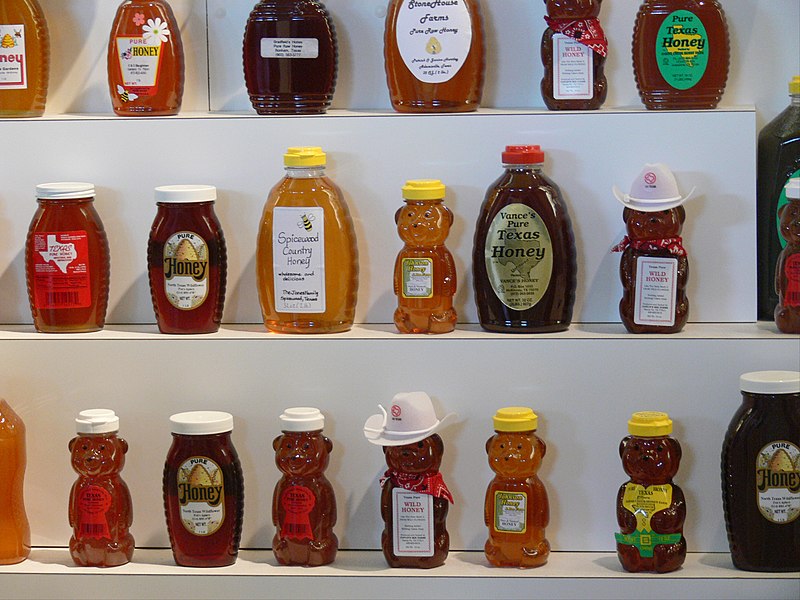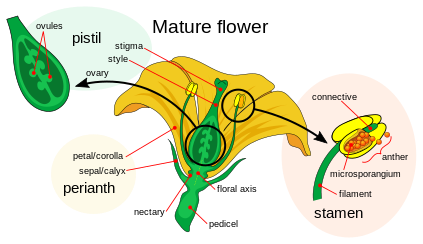I must admit, I'm not a huge fan of maple syrup. As a child I much preferred the sugary maple syrup substitutes to slather on my pancakes. With time I've come to appreciate the flavor and nuances of maple syrup, and as a horticulturalist I'm interested in the process behind consuming a tree's xylem sap as a sugary confection.
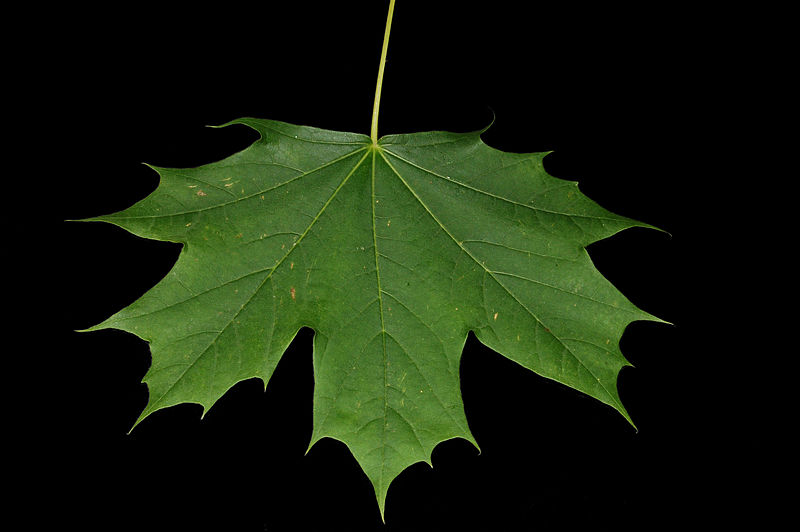 |
| Typical maple leaf |
A plant has two plumbing systems to move nutrients and water around. In general, the xylem moves water and nutrients up from the roots to the leaves. Phloem moves the carbohydrates produced from photosynthesis down and around the plant to places in need of sugars such as growing buds, developing fruit, and young leaves. In general these two systems work side by side to help the tree grow and function properly. When the winter comes, extra carbohydrates are drained from the tree tops and moved into the roots for storage. These extra carbohydrates will provide a much needed boost to get things going when spring comes.
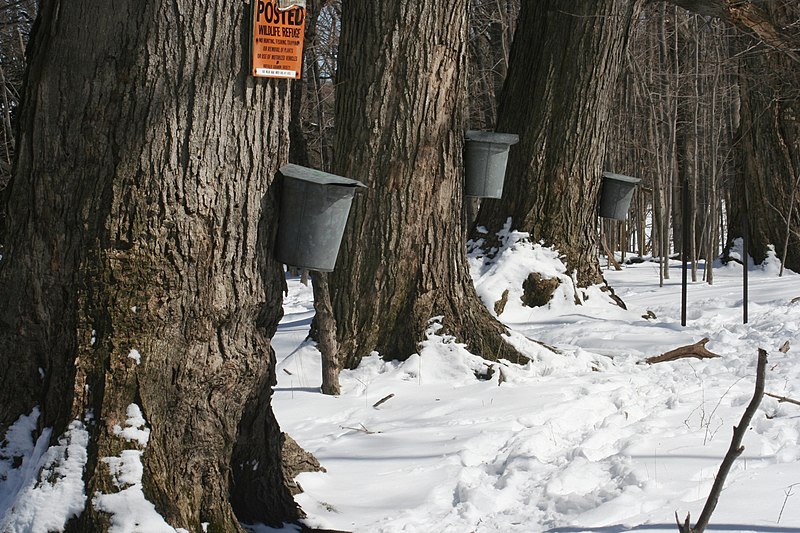 |
| Harvesting maple syrup |
Harvesting maple syrup occurs in the early spring when a tree first begins to move sap upwards to the buds. Holes are bore into the trunk of a tree and a collecting apparatus - either a bucket or bag - is attached to the end of a spigot that helps the syrup flow outwards. In this way, a single tree can produce up to 3.2 gallons a day and 9-13 gallons in one four to eight week season. The sap contains mostly sucrose, water, and different mineral nutrients such as potassium, calcium, zinc and manganese.
Once the sap is harvested, it must be boiled to concentrate the flavor and create the syrup. This process takes a long time and a lot of equipment depending on how fancy you want to be. In general, 5-13 gallons of sap will produce about .26 gallons of syrup. After concentration, the syrup must be filtered to remove sugar crystals and is then bottled and graded.
 |
| Three Grade A, darkest Grade B |
Grading is an interesting procedure, and the grade values of the syrups we eat are about to change. Currently in the US, there are Grade A and Grade B syrups. Grade A tends to have a more mild flavor and lighter color, while Grade B has a darker color and more intense maple flavor. The grading system favors a more sugary, less maple like product - a situation that true maple aficionados don't like. In the early pioneer days, maple sugar was initially valued for making sugar. Maple sugar was more accessible and cheaper than sugar from sugar cane imported from the West Indies. Eventually sugar cane came to dominate the market, so maple growers shifted the focus from sugar to syrup. The preference for lightly flavored and colored sugary syrups dominated, which meant that it was easy to create syrups with additives that looked and tasted like the real thing. In 1906 a law was passed to maintain that maple syrup labeled as such remain only syrup from maples. Grading works off colors according to these early preferences with lighter, clearer syrups maintaining the highest Grade A, and dark, more opaque syrups landing as Grade B. Grade B tends to be cheaper because of it's lower standard, but Grade B also has a more intense maple flavor that is cherished and sought after. With the new system to take affect in 2013, all true maple syrups will become Grade A, distinguished by colors - golden, amber, dark and very dark. This takes away the preference for lighter, less flavorful syrups - but it also means a probable rise in the cost of Grade B type syrups.
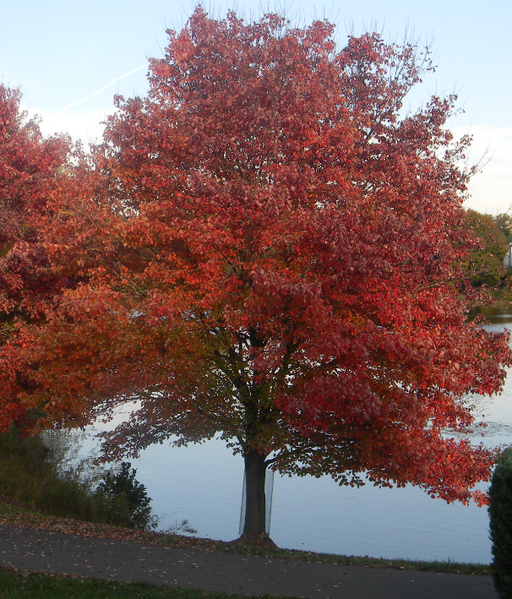 |
| Red maple, Acer rubrum |
Through grading, politics has shaped the American preference for a more sugary, less flavorful syrup in exchange for the dark, mapley flavors of grade B syrup. New policies aim to change these preferences, and give more power to the consumer when choosing flavors.
Because the syrup we currently value is milder and lighter, it's easier to fake. In Vermont this is a big deal - and some politicians are seeking felony charges for those who create and sell artificial knock-offs, looking for a similar special protections like those given to Hawaiian coffee and Washington onions. Senators Patrick Leahy from Vermont and Susan Collins from Maine are hoping that the Maple Agriculture Protection and Law Enforcement act (yes, this spells MAPLE) will increase the punishment for fraudulent syrup to a five year maximum prison sentence.
 |
| Sugar maple, Acer saccharum |
If you were to care about the trees in a situation like this, it's in the best interest of the grower to make sure that not too much sap is harvested from the trees. The trees, mostly sugar, red, and black maples, can begin harvest at 30-40 years old, and be used for up to 100 years. The holes themselves don't cause too much damage to the tree as natural systems will plug the hole once spigots are removed. However, care must be taken to prevent contamination and the introduction of bacterial and fungal diseases.
Why maples? Maples have the highest concentration of sugar in the sap - simple as that. Other maples can be used for syrup harvesting, but they tend not to produce as much as the big three. Maple syrup harvesting has a fantastic history dating back to Native Americans. In fact, the harvesting of sap is one of the few agricultural pursuits that is not a direct import from European countries. It's nice to see that so many people care about the cultivation and purity of this national heritage, and hopefully the tradition can continue (even though we'll never produce as much syrup as Canada - there's a reason their flag has a maple leaf on it.)
 Oh, and can eating local honey help reduce allergies? This study out of the University of Connecticut Health Center tested this idea by taking three groups of allergy suffers and having one consume local honey, the next commercial honey, and the last placebo honey. Those eating the true honey had no noticeable reduction in allergy symptoms compared to the other groups. This makes sense since allergies are caused by wind-borne pollen particles that bees don't collect ... otherwise wind-borne pollen wouldn't need to be blown about by the wind!
Oh, and can eating local honey help reduce allergies? This study out of the University of Connecticut Health Center tested this idea by taking three groups of allergy suffers and having one consume local honey, the next commercial honey, and the last placebo honey. Those eating the true honey had no noticeable reduction in allergy symptoms compared to the other groups. This makes sense since allergies are caused by wind-borne pollen particles that bees don't collect ... otherwise wind-borne pollen wouldn't need to be blown about by the wind!
